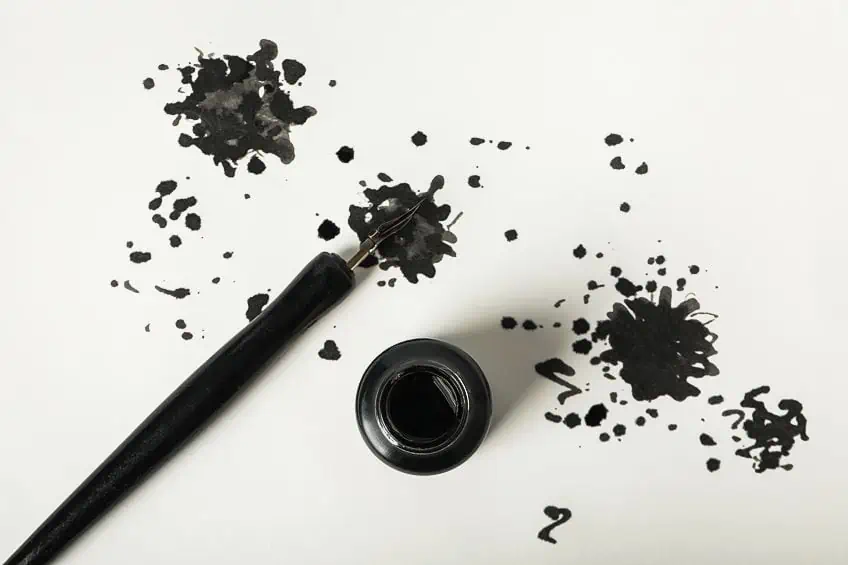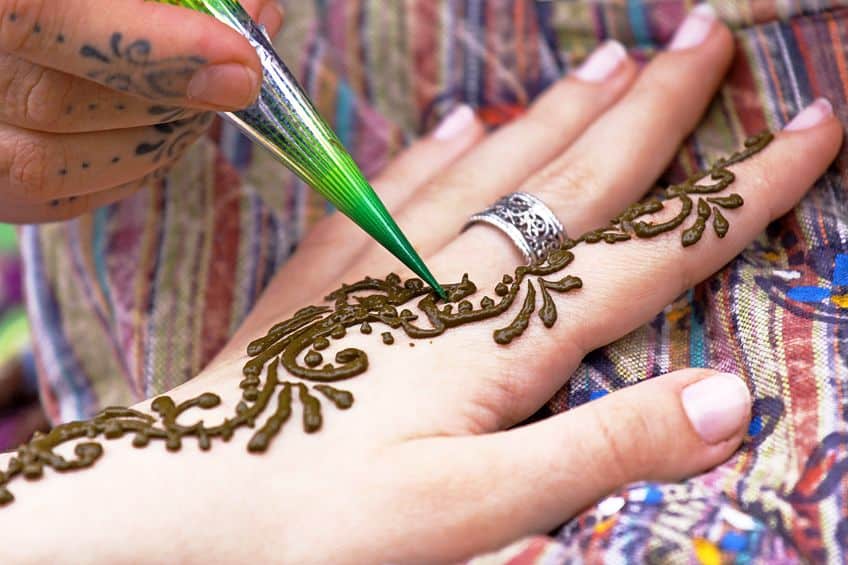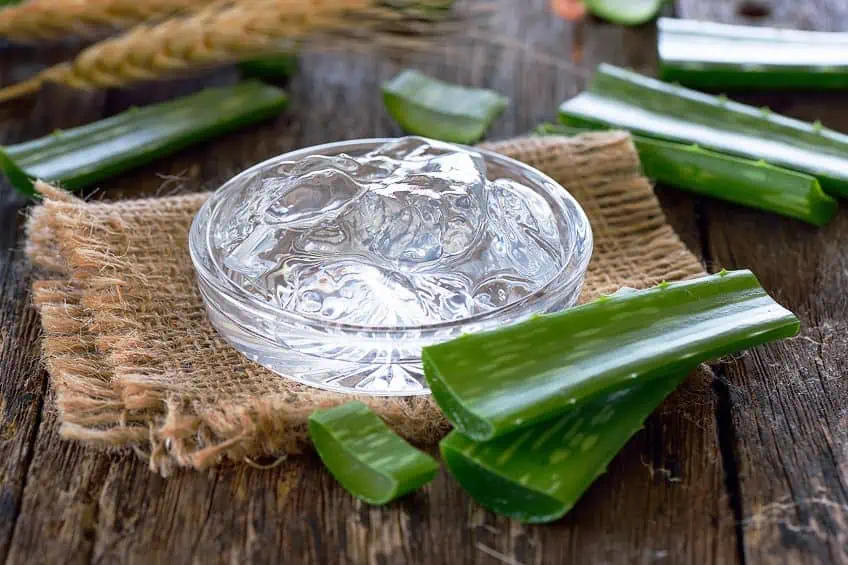Is Pen Ink Bad for Your Skin? – Writing on Your Skin With Pen
This post may contain affiliate links. We may earn a small commission from purchases made through them, at no additional cost to you.
If you have ever used pens to doodle on your skin during a boring class or chewed on a pen and got ink all over your lips and hands, you may be wondering: “Is pen ink bad for your skin?”, and “Is it possible to get ink poisoning from pens?”. Below, we explore how safe pen ink is for your skin, as well as look at some of the most common issues people face when using ink on their skin, and what you can do to prevent these issues. Pen ink can be a great tool for drawing on the skin if done properly, so let’s have a look at what you can do to avoid any nasty side effects and get the best results.
Table of Contents
What Is Pen Ink?
Because of the versatility of the ink medium, there are various varieties of ink that are used inside your pen, each with different properties and ingredients. Pens are made with different combinations of dyes, pigments, resins, solvents, surfactants, and many other ingredients that allow them to be used in many different art forms including writing, drawing, printing, or even painting.
Different Types of Ink
Despite the wide variety of pens available, ink used in pens falls broadly into two varieties: oil-based and water-based. Ball-point pens are the most widely used oil-based pen and felt-tip pens also come in oil-based varieties. Water-based ink pens include felt-tip, rollerball, fountain, dip, and gel ink pens.

Other Components of Ink
Aside from pigments, pens contain many other ingredients that may be harmful to your skin. These include alcohols, formaldehyde, and ammonia; however, pens only contain small amounts of these compounds. This means that aside from possible skin irritation, they are unlikely to have any adverse effects on your skin after the occasional doodle session. Permanent pen ink can also contain a substance called xylene, which is known to be toxic especially if it is inhaled or gets on the mucous membrane around your mouth, nose, and eyes.
Pens may also contain other additives such as glitter, perfume, and metallic pigments, which can also be irritating to the skin or cause micro-abrasions.
Is Pen Ink Bad for Your Skin?
Generally speaking, using pen ink on your skin occasionally will have almost no negative effects aside from some temporary staining. Most pen inks today are considered non-toxic and closely regulated in many countries, however, there are still some adverse effects that are caused by drawing on your skin. The three most common adverse effects of pen ink on the skin include irritation, allergic reactions, and infection. Below, we have a look at what causes these issues and what can be done to prevent or minimize their risk.
Skin Irritation
After skin staining, skin irritation is the most common adverse effect of drawing with a pen on your skin. Signs of skin irritation include redness, itchiness, inflammation, dryness, cracks, bumps, or pain in the area that has come into contact with the pen ink. Due to the staining caused by pen ink, the process of removing the ink is more likely to cause skin irritation than the ink itself. Although pen ink may be difficult to wash off, especially if it has been allowed to dry completely, you should not use any excess force, try to scrub it off, or use any harsh chemicals on your skin as this can damage or irritate your skin further.

Skin Infections
Skin infections are less common than skin irritations but are still a possible effect of drawing on your skin. They are caused by pens or ink that are contaminated with bacteria or mold coming into contact with open or damaged skin. Writing and drawing on your skin can create small abrasions in which these bacteria can enter, and the more frequently you draw on a particular area the more at risk you are.
Sharing pens or using a pen that someone else has used on their skin also puts you more at risk of developing a skin infection.

Like skin irritations, skin infections can have symptoms such as pain and redness, but can also include pus, bleeding, fever, chills, and swelling that worsens over time. Very bad infections will need to be treated by your healthcare provider with antibiotics or topical creams.
Allergic Reactions
Allergic reactions are another possible adverse effect of pen ink on your skin. Although much less common than skin irritation or skin infections, the sheer variety of ingredients and additives in pen inks make it very possible that you may be allergic to a particular formula. Colored inks, particularly metallic formulas, can contain metals such as titanium, cadmium, nickel, and chromium, which can cause an allergic reaction.
Allergic reactions often look very similar to skin irritations depending on what ingredient you are reacting to. Symptoms can include a rash, itching, flaking or cracked skin, blisters, burning bumps, swelling, and redness.

Bad infections can also be accompanied by a fever. Always read the ingredients of the ink in your pens before you use them on your skin to ensure that they do not contain anything that you may be allergic to. If you find yourself having an adverse reaction to a particular pen ink formula or range, it is best to avoid using it or getting the ink on your skin.
Chemical Toxicity
As we mentioned earlier, pen ink is considered minimally toxic due to the small quantity contained in the majority of pens. It is, however, still a risk and should be considered when using it on your skin. Chemical toxicity from pen ink is usually associated with ingesting large quantities of ink, and it is very unlikely that you will develop ink poisoning from drawing on your skin unless you are drawing near your eyes, nose, or mouth. These parts of your skin contain mucus membranes that can absorb the ink.
Symptoms of chemical toxicity include nausea, vomiting, diarrhea, dizziness, stomach pain, and sores or redness around the mouth or eyes.
What Factors Influence the Effects of Pen Ink on the Skin?
There are many different factors that influence the impact that pen ink will have on your skin. The type of pen, how frequently you use pen ink on your skin, your skin type, and even the composition of the ink itself can all influence how vulnerable your skin is to the adverse effects of writing on your skin.
Type of Pen
Dip pens also pose more of a risk because they use bottled ink. Bottles of ink have a much larger amount of ink compared to the amount that is found in pens meaning that spilling or ingesting this ink puts you at greater risk. The tips of these and fountain pens are also much pointier, making it easier to damage and break the skin if you use it to write on yourself.

Your Skin Type
If you have dry or sensitive skin, or skin conditions such as eczema, you are more likely to develop skin irritations than those with normal or oil skin. This is because your skin’s protective barrier is not as robust. Any open wounds or scratches also provide an entry for bacteria and foreign bodies to enter your skin, which can lead to an infection in the area even if the ink itself is non-toxic.
The alcohol in some pens can also cause problems for sensitive skin with repeated exposure, as they can be drying.
Ink Composition
Different pens have the potential to cause more harm than others, especially permanent inks. Permanent pens often contain an ingredient called xylene, which is known for causing rashes and dryness if repeatedly used on the skin. Perfume and glitters in pens can cause skin drying and irritation, glitters can also create micro-tears in the skin which are small cuts that bacteria can enter through, which can put you more at risk of developing an infection.

Frequency of Use
The more you write with ink on your skin, the more likely you will be to develop an adverse reaction. Repeatedly using pens to draw over large areas of your skin every day will put you at the most risk, especially if it is in the same spot. Additionally, pen ink also inhibits your skin’s oxygen absorption, which can lead to even more problems and even age your skin faster.
How to Minimize the Risks of Using Pen Ink on Your Skin
Now that you know about the most common effects of drawing your skin, you might be wondering what you can do to avoid them. Aside from stopping the habit altogether, there are a few precautions that you can take to minimize the risk of using a pen to draw on your skin.
Using Non-Toxic Ink
When choosing a pen to use on your skin, opting for one with a non-toxic ink can reduce your risk significantly. This is especially important for permanent pens and oil-based formulas. Look for non-toxic, xylene-free, and metal-free options to minimize the risk and impact on your skin. Be sure to keep all inks away from pets and unsupervised young children, even if they are labeled as non-toxic as they can still cause other issues such as skin staining and irritation.

Cleaning Your Skin and Pen Before and After Use
To minimize the risk of infection, be sure to properly clean your skin and pens before and after you use it. When cleaning your skin and pens, simply use water and a mild soap. Be sure to focus your cleaning on the nib of the pen as this area comes into direct contact with your skin. If you are not interested in preserving your designs or want to minimize the staining on your skin, try not to allow the ink to dry completely and wash your skin as soon as possible with water and mild soap.
Avoid using harsh chemicals or drying alcohols as this could further irritate your skin.

Any residual staining will fade over the next few days with regular washing, so there is no need to scrub the area. For really stubborn staining that needs to be removed quickly, apply some rubbing alcohol or hand sanitizer to the area before washing to help dissolve the ink. Follow this with some moisturizer as these solvents can be very drying and irritating to the skin, especially if used over a large area. Baby oil, cooking oils, or even butter can also be used as a gentle way to remove oil-based pen inks.
Using Appropriate Pens for Skin Use
If you draw on your skin often, it might be a good idea to use pens that are specially formulated for this. These pens have rounded nibs and inks that are specially formulated to be safe on skin making them safer and gentler on your skin. They come in a variety of different colors and can last for several days or be washed off immediately. Look out for skin-safe pens such as BIC BodyMark pens or those labeled as tattoo pens.
Henna or even liquid eyeliners are also some other tested skin-safe alternatives that can be used to draw on your skin.

Henna can last for up to three weeks on the skin giving you a great semi-permanent option, while liners can last for a few days or be wiped off immediately using a make-up remover. While both of these options adhere to cosmetic laws and are FDA-approved, you should still patch-test them before using them on a large area of your skin.
Avoiding Excessive Use
Try to limit how often you draw as well as the size of the area that you draw on to minimize your risk of skin irritations and infections. Remember to give your skin a break from being drawn on for a few days to allow your skin to heal and to replenish its protective barrier. Refrain from drawing on or near your eyes, nose, and mouth and on any skin that is wounded or damaged. Additionally, you should avoid drawing around areas that are prone to or have an active flare-up of acne or eczema. Be sure to store ink bottles safely away from children and pets to prevent them from being exposed to large amounts of ink through accidental spillage or ingestion.
It can also be helpful to wear gloves when working with inks if you want to prevent accidentally getting any on your hands.

What to Do If You Experience Skin Problems from Pen Ink?
Getting ink in your eye will cause irritation, however, aside from some temporary staining, you are unlikely to have any lasting damage if you immediately rinse out the eye with clean water. If any eye discomfort or blurry vision persists, visit your healthcare professional. If you accidentally ingest some pen ink, simply drink lots of water. If you ingest more than an ounce of ink, however, it is a good idea to contact poison control. If you develop a slight skin irritation with pen ink, stop drawing on your skin immediately and rinse the area thoroughly.
Avoid using hot water, harsh soaps, cleansers, or cosmetic creams on the area as these can further irritate your skin. You can also consult your local pharmacist for recommendations on treating the area.

Most irritations should clear up on their own within a few days, however, if you have an irritation, infection, or allergic reaction that is worsening or not improving, or you develop excessive pain, swelling, pus, fever, or chills it is important to immediately consult your healthcare provider for diagnosis and treatment. This can also help you determine if your reaction was to the ink itself or other factors such as unhygienic pens, so you can hopefully avoid a reaction in the future.
Home Remedies for Skin Problems
There are also some home remedies that can help the symptoms of a mild skin irritation and speed up your recovery. A cold compress made with an ice pack wrapped in a damp towel can be used to reduce swelling and redness. An oatmeal poultice or bath made by adding around one cup of colloidal oatmeal to a bath of lukewarm water can help reduce inflammation and drying. Aloe vera gel can be added topically to your skin to moisturize your skin and soothe inflammation. While these can be helpful for very mild skin irritations and infections, you will need to contact your doctor to treat a bad or worsening condition.

Although pen ink is generally considered to be non-toxic, there are many other negative effects that can arise from drawing on your skin. The likelihood of you developing a skin irritation from drawing on your skin depends on many factors. Skin sensitivity and the frequency of drawing on the skin tend to be the biggest influences. Keep your skin and pens clean, avoid drawing on your skin excessively, and use gentle and non-toxic formulas to minimize your risk.
Frequently Asked Questions
Is Pen Ink Bad for Your Skin?
Most pen inks today are considered to be non-toxic and there is very little risk when using them on your skin. However, some inks, such as permanent and metallic ink, pose a greater risk of skin irritation and infection. Additionally, excessive and frequent use of pen ink on your skin can also cause micro-abrasions and inhibit your skin’s ability to absorb oxygen, which can also increase your risk for skin irritation and infections.
What to Do If You Get Skin Irritation When Using Pens?
If you develop a skin irritation, immediately stop using pen ink on your skin and thoroughly rinse the area. For mild irritations, home remedies such as a cold compress or aloe vera can encourage healing, however, contact your doctor or healthcare provider if the irritation continues for more than a few days or worsens.
How Long Does Pen Ink Stay on the Skin?
If it has been allowed to dry, pen ink can stain the skin for up to five days but will begin to fade after the first day. Washing the area more frequently, using harsh soaps, or scrubbing the area will cause the ink to fade faster.
Can Pen Ink Be Used in Tattoos?
No, pen ink is not advisable to use in tattoos. Unlike pen ink, tattoo ink is sterile and made from components that have minimal allergens and are proven to be safe to use under the skin. Using pen ink for tattooing will put you at risk for many adverse effects including allergic reactions, lead poisoning, or severe skin infections.
Megan is a writer and researcher who graduated from the University of Cape Town with a degree in Social Sciences, specializing in Psychology and Environmental Science. Her passion for knowledge and leaving a positive impact has fueled her current work in conscious and sustainable growth in Southern Africa. Megan’s love of nature has also led her to train as an animal behaviorist. She works part-time training and rehabilitating dogs. Megan is interested in the physical and psychological effects of colors in our environment on our mood and well-being. In addition, she is concerned with how art and creativity have been an integral part of human society. Megan van Schoor has been writing blog posts on the topics of painting, drawing, and color theory for acrylgiessen since 2021.
Learn more about Megan van Schoor and about us.







